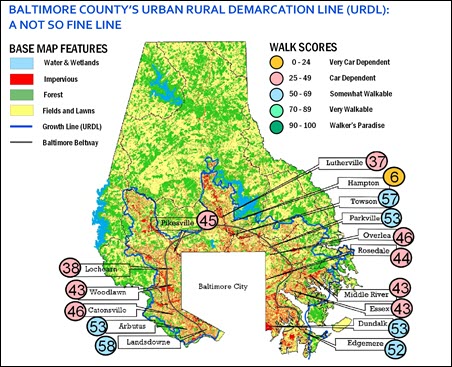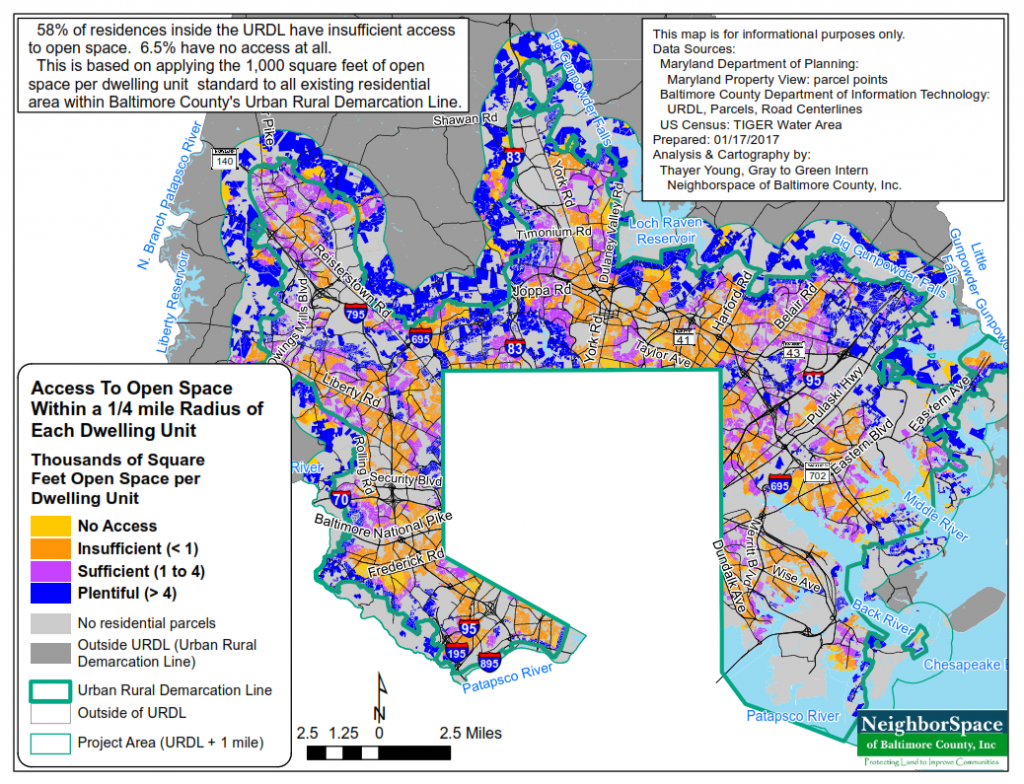Let's face it. A walk around the edge of our postage-stamp backyards isn't going to max out our daily step counts. We need destinations - parks where we can walk the dog, stores where we can pick up a few groceries, and other amenities like restaurants, coffee shops, and even the occasional pub.
But the first-tier suburbs where we live weren't "made for walkin." We've made this point many times showing the "walk-score" map below. A privileged few of us live in "somewhat walkable" areas. I'm one. I can walk to the Giant and to Racers Cafe in Parkville. (But there are parts of that walk where the sidewalk mysteriously disappears and, just to be clear, this is on the way to Racers as well as on the way back). Far more of us are relegated to areas designated as "car dependent."

When you drill down on this further to see how many residences have access to adequate open space, places where you might walk with or without a dog, that are within a quarter-mile (i.e., five-minute) walk of home, the picture is that much more bleak. Sixty-five percent of residences lack adequate access to open space, defined by the county as at least 1,000 square feet per dwelling unit, within a distance of 1/4 mile from home, as shown in the map below:

We're preaching to the choir here, I know. But, recently, we've had the chance to make our pitch to, and be invited to join, the Baltimore County Local Health Coalition. This group produces a Community Health Improvement Plan (CHIP), which is a long-term, systematic effort to address public health problems. The county's CHIP has three priority areas (1) Behavioral Health, (2) Access to Health Care, and (3) Diseases / Chronic Conditions, the goals for which are currently being recast.
We joined as members of the Coalition last fall and have an obvious affinity with priority area 3, Diseases / Chronic Conditions. Among the new goals discussed for this priority area is to "promote and support active, healthy lifestyles to decrease long-term, chronic disease burden." In the materials considered at the last meeting were examples of how other local governments around the country have addressed these same issues. From Pierce County, Georgia comes the idea to "protect and improve the natural environment, particularly in low income neighborhoods," so a to prevent chronic disease. Sounds to me like these folks are gonna need a land trust.
I can tell you from having attend three meetings of the group to date that I see many avenues of potential collaboration. The challenges we have in overcoming the needs for open space and connectivity (e.g., pedestrian trails) that exist in the county will not be solved by any one organization but must, rather, be the result of a collaborative effort. We are hopeful that this collaboration with the Baltimore County Local Health Coalition will lead to solutions that meet our mutual goals.
Thank you for the privilege of your time and for your interest in this important topic. If you found it of interest, would you use the share buttons below to pass it on?
